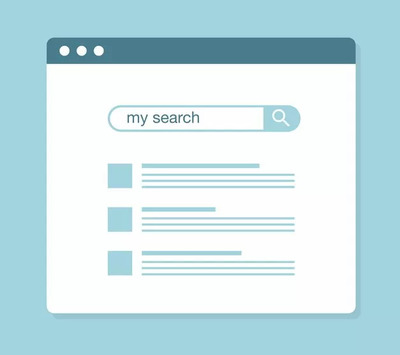Recent Google algorithm updates have made it clear that Google is evolving what it means to be relevant. Sites that used to rank at the top for years have increasingly found themselves down a few places and losing traffic.
What is natural language processing for search queries?
It’s generally understood that Google is not a keyword-based search engine anymore. Google is matching natural language questions to answers.
This is what Google said in 2018 (The Evolution of Search) :
“Techniques such as ‘neural embeddings’ help us understand the underlying concepts that people are searching for without relying on the specific words used… As Search enters its next phase of development, there are two trends that will have a significant impact on consumer behavior: more conversational queries and visual searches.”
Google’s been working on natural language, or conversational search, since at least 2013. Conversational search is about understanding what users mean, particularly when users speak their queries.
Google recently stated that the most profound change in search for the past five years was the 2019 introduction of the BERT algorithm.
“…we’re making a significant improvement to how we understand queries, representing the biggest leap forward in the past five years, and one of the biggest leaps forward in the history of Search.”
BERT improves how Google understands natural language search queries that are types or spoken as questions or requests.
- “Google, how do I ____?”
- “Google, where can I purchase ____?”
Does Google do anything similar with web pages?
Google recently published a research paper that discusses training machines to read a web page in natural language like a user who is searching for answers. The research paper is namedNatural Questions: a New Corpus and Challenge for Question Answering Research

The purpose of the research was to create a question and answering data set in order to train a machine in how to find answers on a web page. This means it’s about creating a system that will help train a machine so that instead of scanning a page for keywords, Google is scanning a page and looking for answers.
The research paper describes that part of the task like this:
“Open-domain question answering (QA) is a benchmark task in natural language understanding (NLU) that aims to emulate how people look for information, finding answers to questions by reading and understanding entire documents.
Given a question expressed in natural language (“Why is the sky blue?”), a QA system should be able to read the web… and return the correct answer, even if the answer is somewhat complicated and long.”
There are many more research papers about natural language processing. If you want to learn more, read the excellent overview published by Stanford University that can inform on current directions in information retrieval.
Is Google Using Natural Language Processing for Content?
Google rarely discusses the technologies in use, and when it does it’s after they’ve been in use for months and even years. What we do know is that Google has used a technology they call RankBrain since 2016.
RankBrain is an AI-based system that matches words on a web page to concepts.
Regardless of which technology Google is currently using, it is clear that it’s matching natural language and far beyond simple keyword matching between search queries and web page content.
How to Be Relevant for Natural Language Search Queries?
Creating content used to be about talking around and about the targeted keywords. The meaning of being relevant for natural language today is more about understanding what a user is trying to accomplish when they are searching and then writing content that accurately addresses what the user is trying to do.
While using every word in the targeted keyword phrase is still largely important, it’s not necessary to salt every heading tag with the phrase. In fact, many sites rank at the top of the search results despite not using keyword phrases in the headings.
Nevertheless, it’s generally important to use the entity (person, place, or thing) that is the subject of the keyword phrase. If the search query is “How to drive a car” then using the word “car” is important.
For example, the top two ranked pages for the search queries “how to drive a car” and “learn to drive a car” are usually the same two sites. Change the entity from car to the synonym “auto” and the top site (WikiHow) remains as number one, even though the word “auto” does not exist on that page.
The takeaway there is that this one page successfully answers the query for someone who wants to learn how to drive a car and often any synonyms for the entity, car.
The Value of Knowing When to Stop Writing

As a hypothetical example, suppose your target keyword phrase is “how to drive a car” and the word “truck” makes it into the article. The search result for the “truck” variant is about learning how to drive a commercial truck. The consequence of adding the word “truck” into an article that’s really about “car” could result in the meaning of the page losing focus.
Use as many words as necessary to answer the question. Don’t feel as if you need to keep writing in order to hit some magical word count.
Article Focus is Important
Losing focus is a common reason why some sites lose rankings or fail to achieve rankings altogether. The lesson here in terms of relevance is to understand when the content is losing focus. If the web page is about television set reviews, there is no reason to digress into a discussion of your favorite TV show from the 1990s. Something as small as that can be enough to push the meaning of the page out of focus.
Web Pages Have a Purpose
Google has published a Search Quality Raters Guideline for use by third- party raters whose job is to evaluate the success of new algorithms. The guidelines do not provide clues of how Google’s algorithms work. However they do give insights into what is important for creating a quality web page.
In section 2.4.1 the guidelines states that main content can be text, images, videos, page features, like widgets and calculators as well as user-generated content. But what’s really important is how Google instructs that all of these features are important because they help the page “achieve its purpose.”
“Main Content is any part of the page that directly helps the page achieve its purpose… MC can be text, images, videos, page features (e.g., calculators, games), or it can be user-generated content, such as videos, reviews, articles, etc. that users have added or uploaded to the page.”
When creating a web page, think about what the purpose of that page is. Then compare that to the keyword phrase you want to rank for. Does the purpose of the page match up exactly with the need expressed in the users’ search query?
Aligning the purpose of a web page so that it serves the user who is making the search query is how to define relevance today.

Serve the Users
Section 12.0 of the quality raters guidelines defines the needs of mobile users in terms of “I want to…”
What that means is that natural language search queries can be seen as help for accomplishing tasks.
That’s Google asking the quality raters to judge a page for relevance by judging if the page helps users complete the tasks that are indicated by the search query.
Let the Search Results be Your Guide
Always let the search results tell you what Google wants. In a hypothetical example, if the top three ranked sites avoid the use of jargon but the next three use technical jargon, it’s possible that Google is showing the top three because they are appropriate for newbies. Also, that Google is showing the next three jargon-filled pages because they are appropriate for advanced users.
What that means is that in that hypothetical search query, most of the users are newbies but a considerable but lesser amount are advanced users. In terms of creating content, if you want to rank at the top then write for the majority of users, which in this hypothetical case means newbie users.
This is what Google’s SEO starter guide recommends:
“Think about the words that a user might search for to find a piece of your content. Users who know a lot about the topic might use different keywords in their search queries than someone who is new to the topic.”
That information will determine whether Google will rank an advanced web page or a page that focuses on newbies at the top.
Google also comments that finding the information should be easy and fast:
“Users want results right away, at that moment, and may not be able to spend a lot of time to find what they are looking for.”
Giving users the information they want in a fast manner is important for being relevant for natural language queries. One of the most common errors seen is writing a preamble or introductory paragraph. One or two sentences describing the problem and the answer is enough. Anything else is rambling and that tends to make a page less relevant and rank lower, if at all.
Images Communicate Your Relevance
In a 2010 research paper, Google’s scientists discovered that thumbnail images communicated information about the web page that was not available in title and page snippet text.
Perhaps more importantly, thumbnail images that communicated what the topic was about when displayed together with text caused users to make better decisions about which web page was best for them.
“Our results show that thumbnails add information about the relevance of web pages that is not available in the textual summaries of web pages (title, snippet, and URL).
…the best performance was obtained by combining sufficiently large thumbnails (at least 200×200 pixels) with page titles and URLs – and it was better to make users focus primarily on the thumbnail by placing the title and URL below the thumbnail.”
The above research study does not mean that adding a “relevant” image will help you rank better. But it does demonstrate the value of using images that are relevant to the meaning of your web page.
Takeaways:
People who use search engines are constantly changing how they search, changing what they search for, and the reasons for searching are also constantly evolving.
Understanding what users want to accomplish gives your content its purpose. Everything that contributes to serving that purpose is relevant. Everything that does not contribute to serving that purpose is not relevant.
The definition of the word “query” is a question (noun) and to ask a question (verb). Today more than ever, being relevant for a search query means providing the answer to a question.

